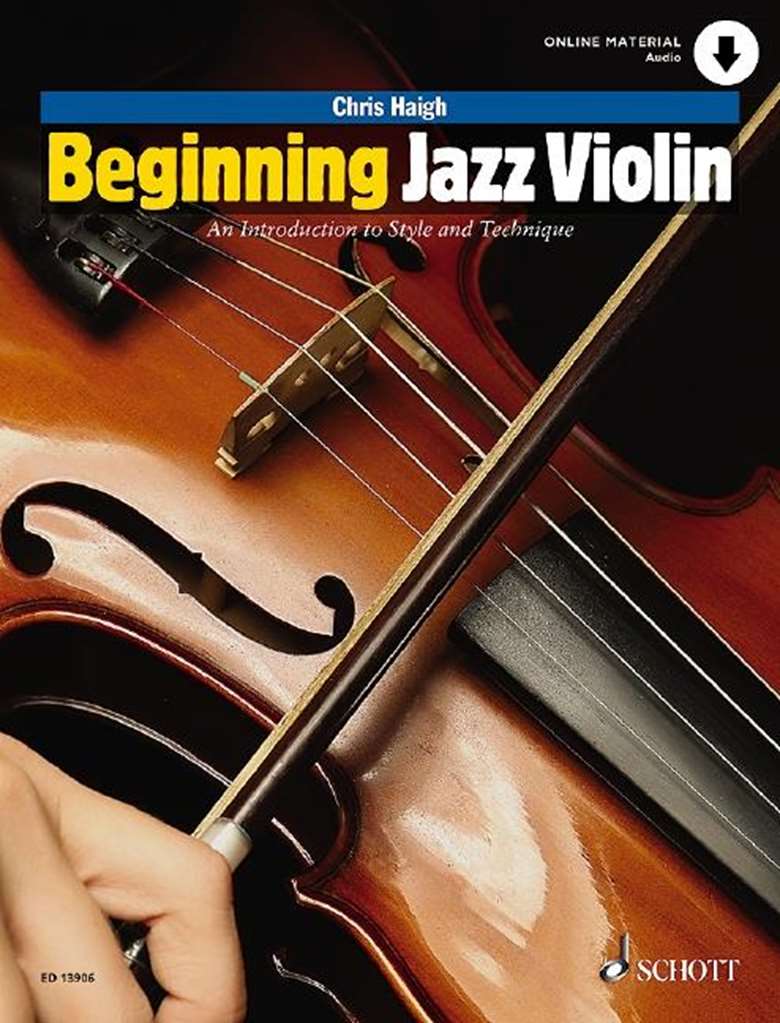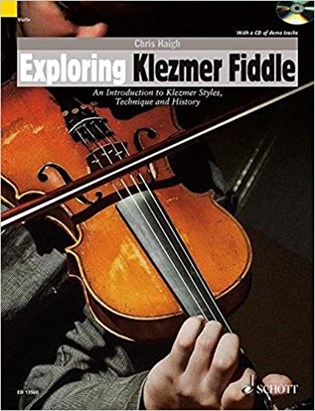Violin Sheet Music Reviews: March 2020
Helena Ruinard
Sunday, March 1, 2020
Helena Ruinard reviews Beginning Jazz Violin and Exploring Klezmer Fiddle by Chris Haig, published by Schott Music.

We already have an excellent guide to jazz violin, also written by Chris Haigh, which Schott brought out a few years ago as part of its Exploring series. If that one is a manual for people who already play the violin but want to learn how to play jazz, this one assumes prior knowledge of neither violin playing nor jazz. Admittedly, you would have to be a quick learner if that were the case, but in his summary of the three types of people who might want to use this book – the classically trained violinist, the traditional fiddler wanting to improvise, and the beginner in both senses – Haigh says the third group will be most motivated.
In the first chapter basic technique and theory are covered, the theory being an awareness of tones and semitones and how they make up major and minor scales, together with an introduction to all the keys in the form of the circle of fifths and basic note values and rhythms. The next couple of chapters take us step by step through learning swing style and then how to start improvising. Through exercises with backing tracks we start to absorb how it feels to play swing quavers with effective bowing patterns – for example, one separate, three slurred – and how to use syncopation.
Simple tunes in violin-friendly keys, generally G major, are introduced as further practice in playing what is written, but also as structures over which to improvise, based on the major scale. It sounds simple, but this has to be in your blood if you're playing jazz, so it's all worthwhile, even for the most sophisticated players.
Throughout the book, each tune is used for several successive exercises so that a point of style will be revealed step by step and through practical experience. Haigh is fond of making his students jump in and just play, even if it is definitely going to sound wrong – for example, using the G minor blues scale over a tune in G major. Only then does he include modified versions, encouraging experimentation and observation through practice. A similar technique is used to demonstrate the importance of rests, and to teach us how to vary and develop licks.
By the end of the book we have covered how to approach the more alarming chord symbols (like Bm7flat5) with a cool head; the ever-useful pentatonic scale; major and minor blues scales; typical chord sequences like II IV V; and, all the while, useful licks and bowing/rhythm patterns.
There is no skimping on necessary theory, but all the way through this is applied to tunes and exercises, which all come with backing tracks. The accompanying text is written from one performer to another, always looking at what it means for the violin player preparing to play a solo on the spot. The main mantra is: keep it simple! As a highly practical guide, this book is going to be attractive both to those who are single minded in their pursuit of jazz violin and those who just want to dip their toe in but get a real feel for it at the same time.
Exploring Klezmer Fiddle


This guide to klezmer has been out for a few years now, but deserves to be profiled as it will remain an important tutor for years to come. In common with the other books in the Exploring series, there is plenty of background about the style of playing and key figures in its development. Much of this is woven in with practical facts and applicable theory, such as a quote in the chapter on modes and scales from the well-known klezmer violinist, Cookie Segelstein: ‘We teach the modes, but we show how “this section has the freygish feel” or “this section has the mi sheberakh feel.” It doesn't mean the whole tune is in that mode. There's a whole set of cadential variations that can happen. Don't lock yourself into a seven-or eight-note scale system.”
The book takes us chapter by chapter through the rich history of klezmer, covering the religious origin of the main modes and some of the tunes. It also takes in the emigration patterns of both the medieval period – when large numbers of Jewish people were driven from western Europe and settled in eastern Europe – and the late 19th century – when many left Hungary, Russia and Ukraine to settle in the USA – as well as the influence of Turkish, Mongol and gypsy music. Through all this, we can start to appreciate some of the contradictory meanings ascribed to klezmer. To some, it is a badge of Jewish identity closely associated with religion and spirituality, while for others it is celebratory music, played for hundreds of years by professionals who would adapt whatever their local audience wanted.
There is a fantastic selection of tunes here, all chosen for the strength and playability of their melodies and demonstrated by Haigh and friends on the accompanying backing tracks.

